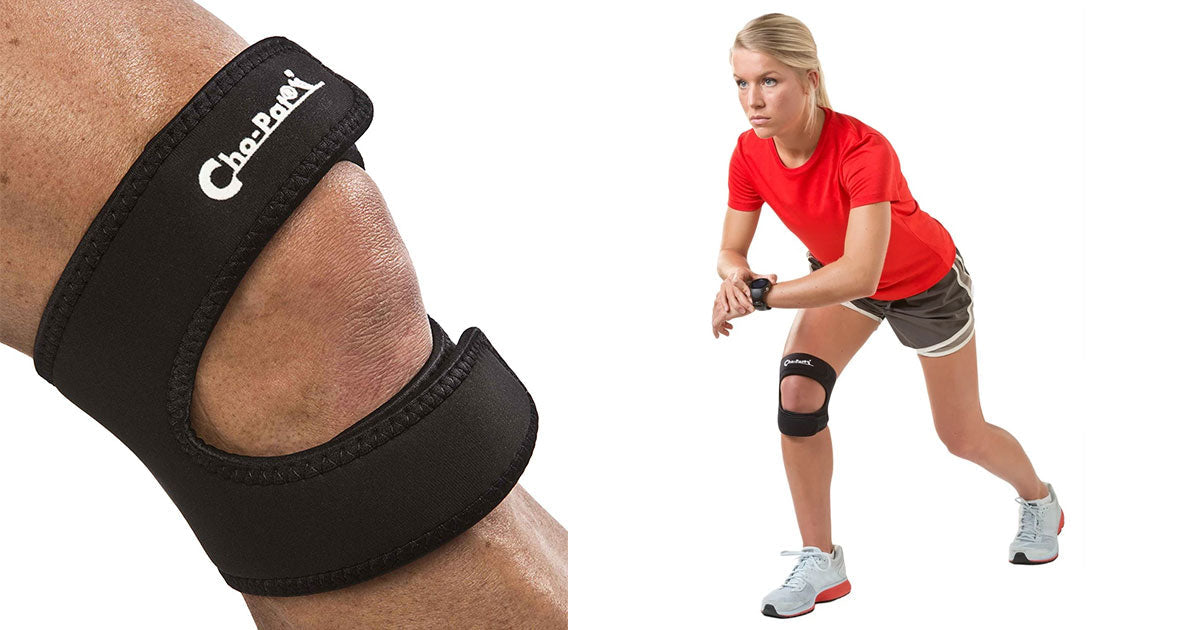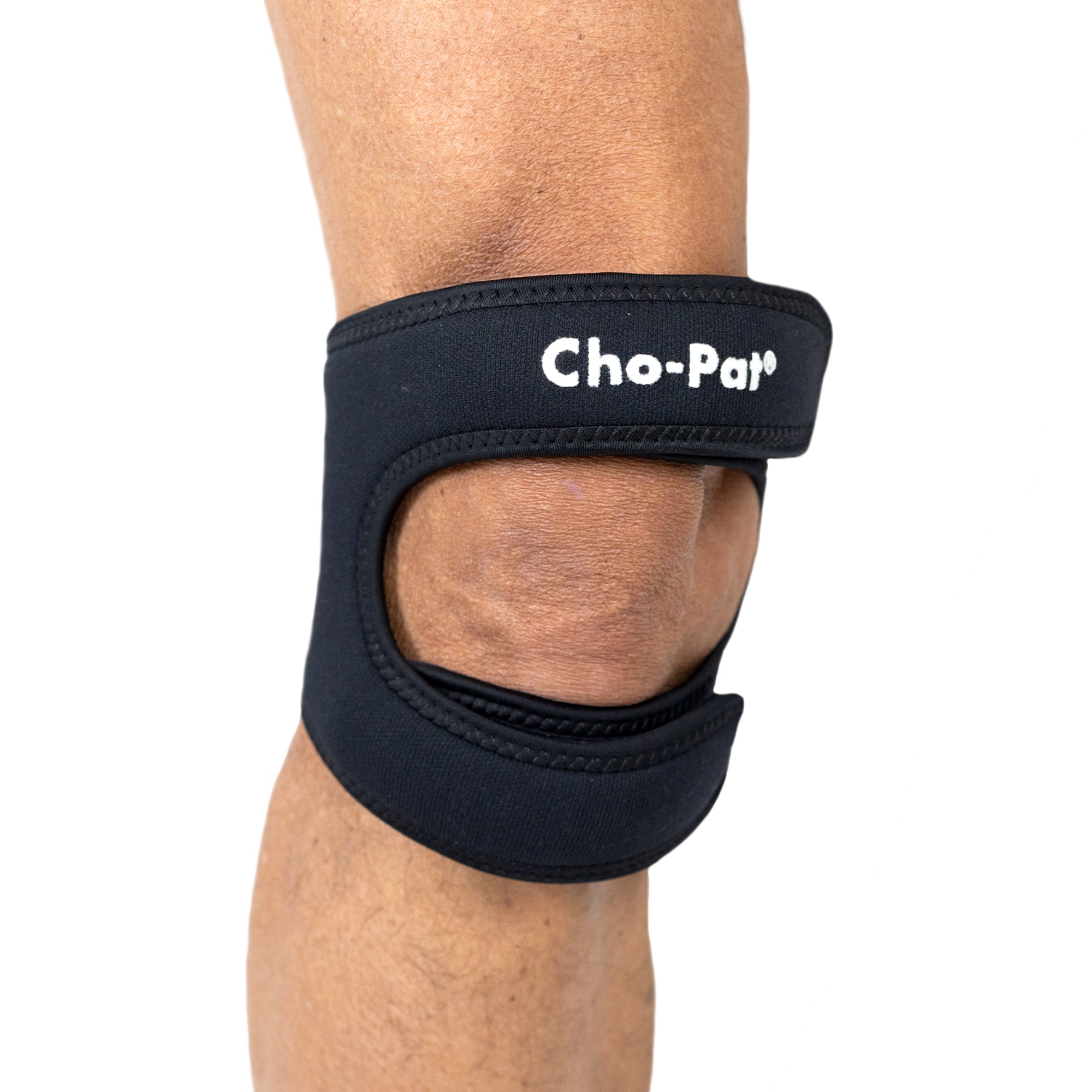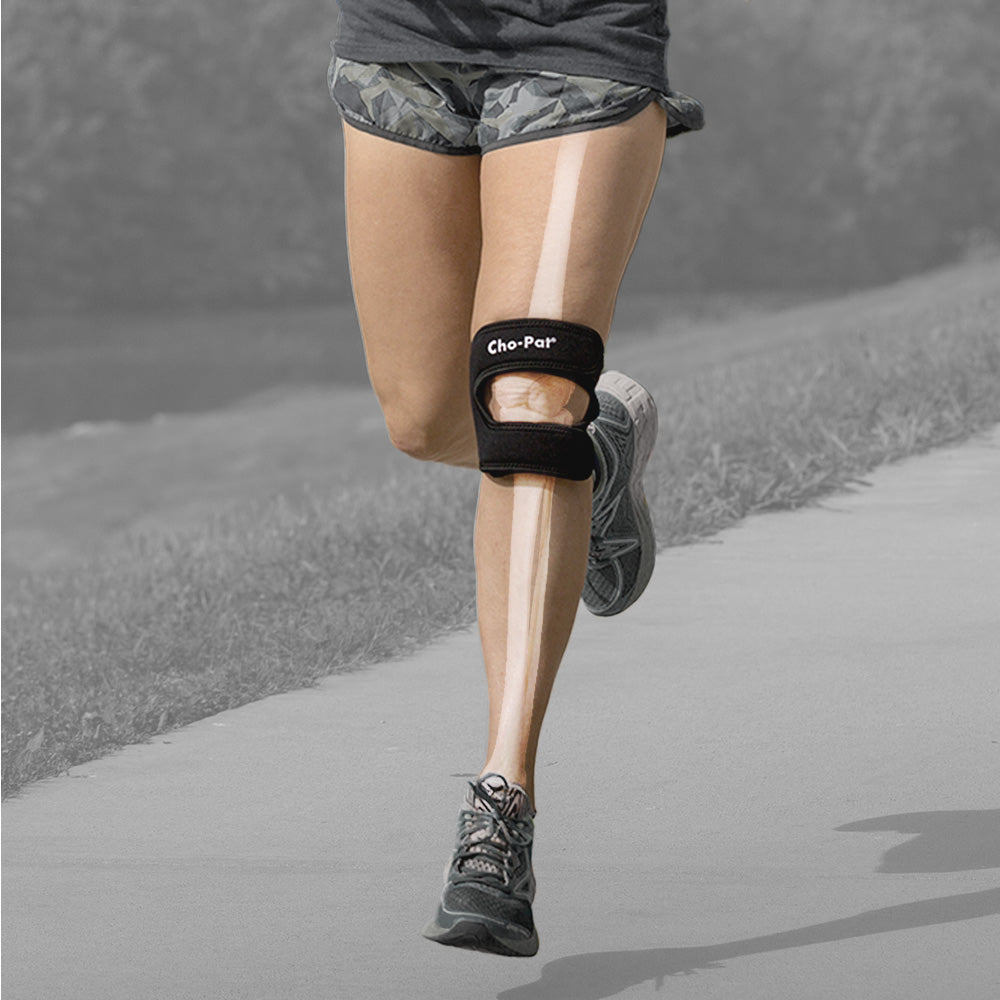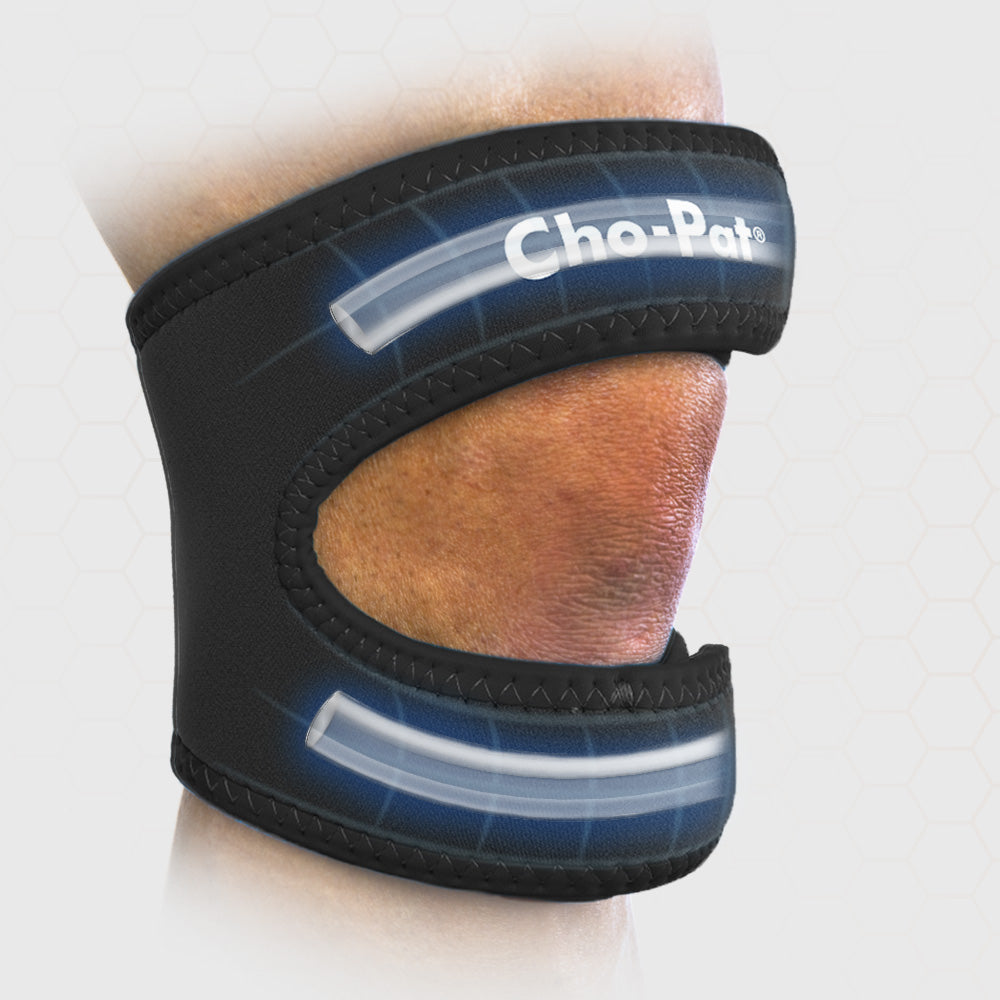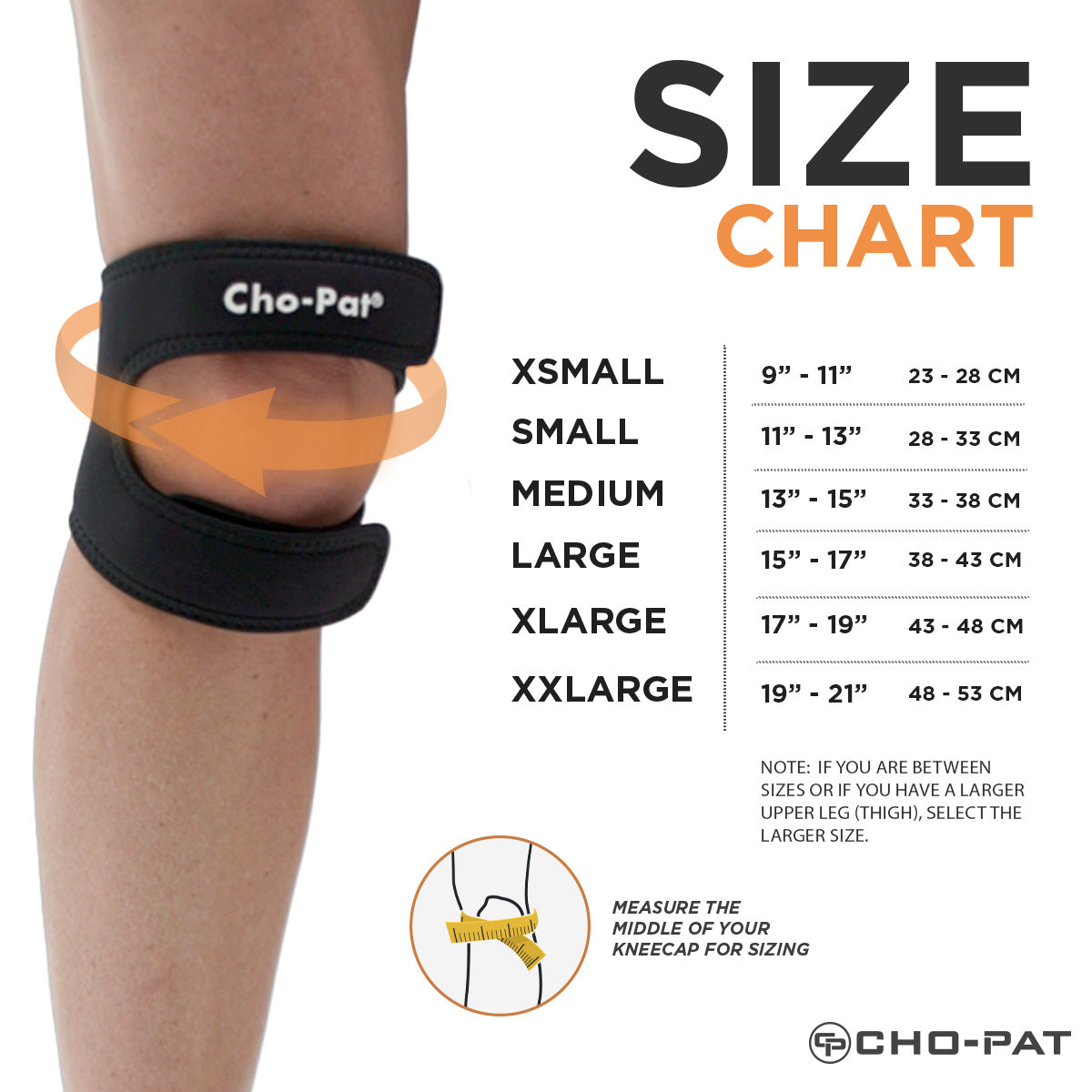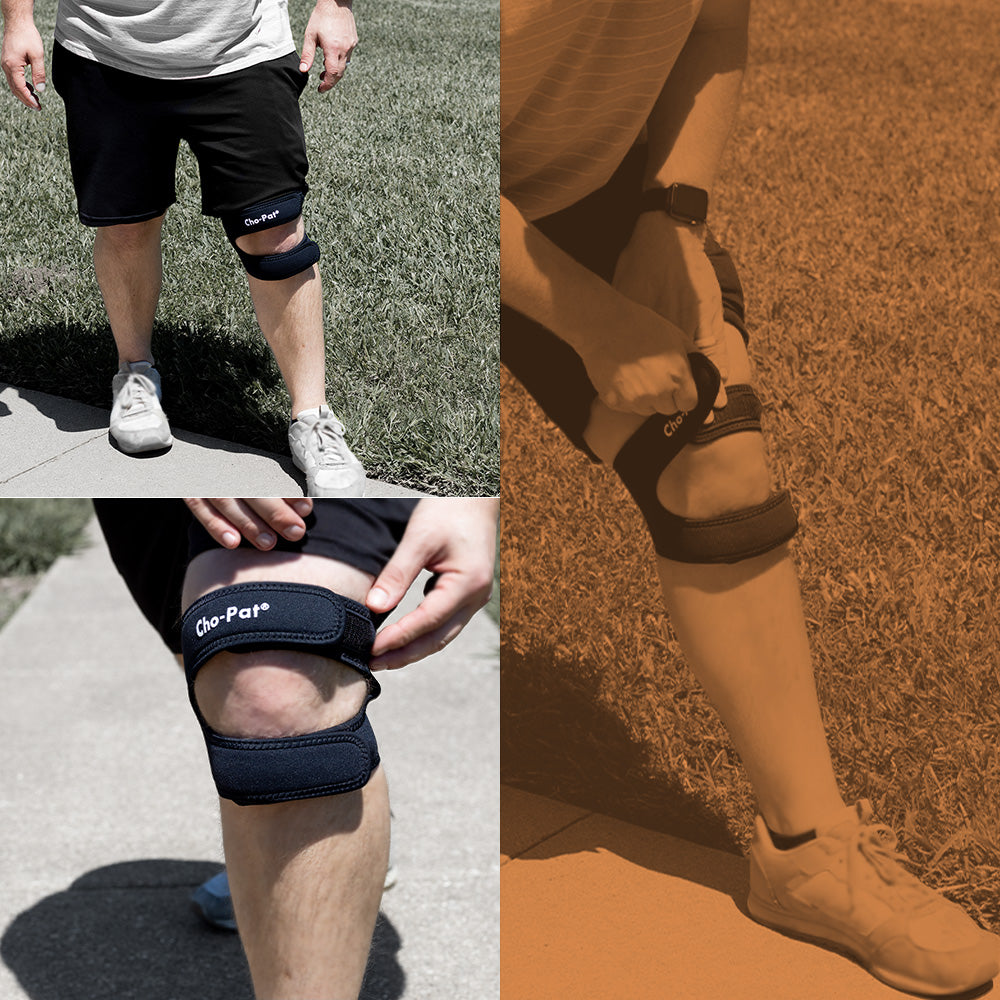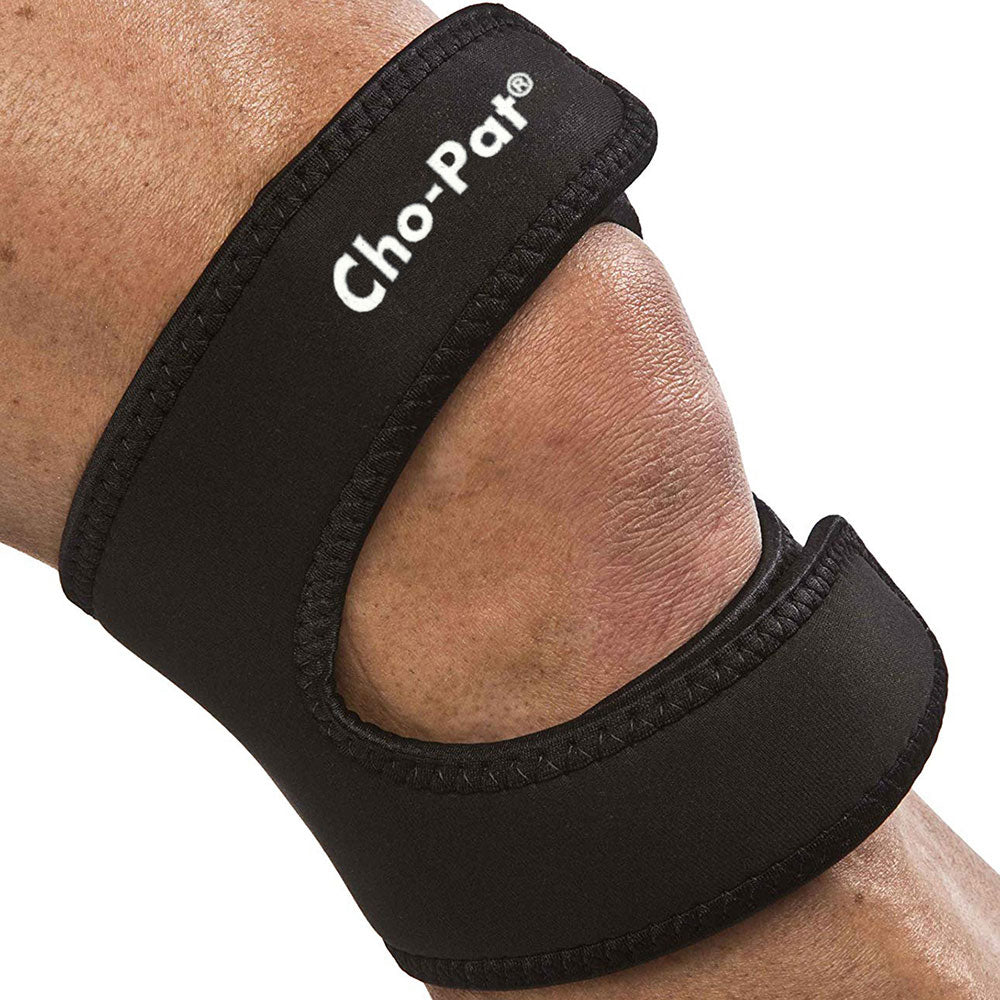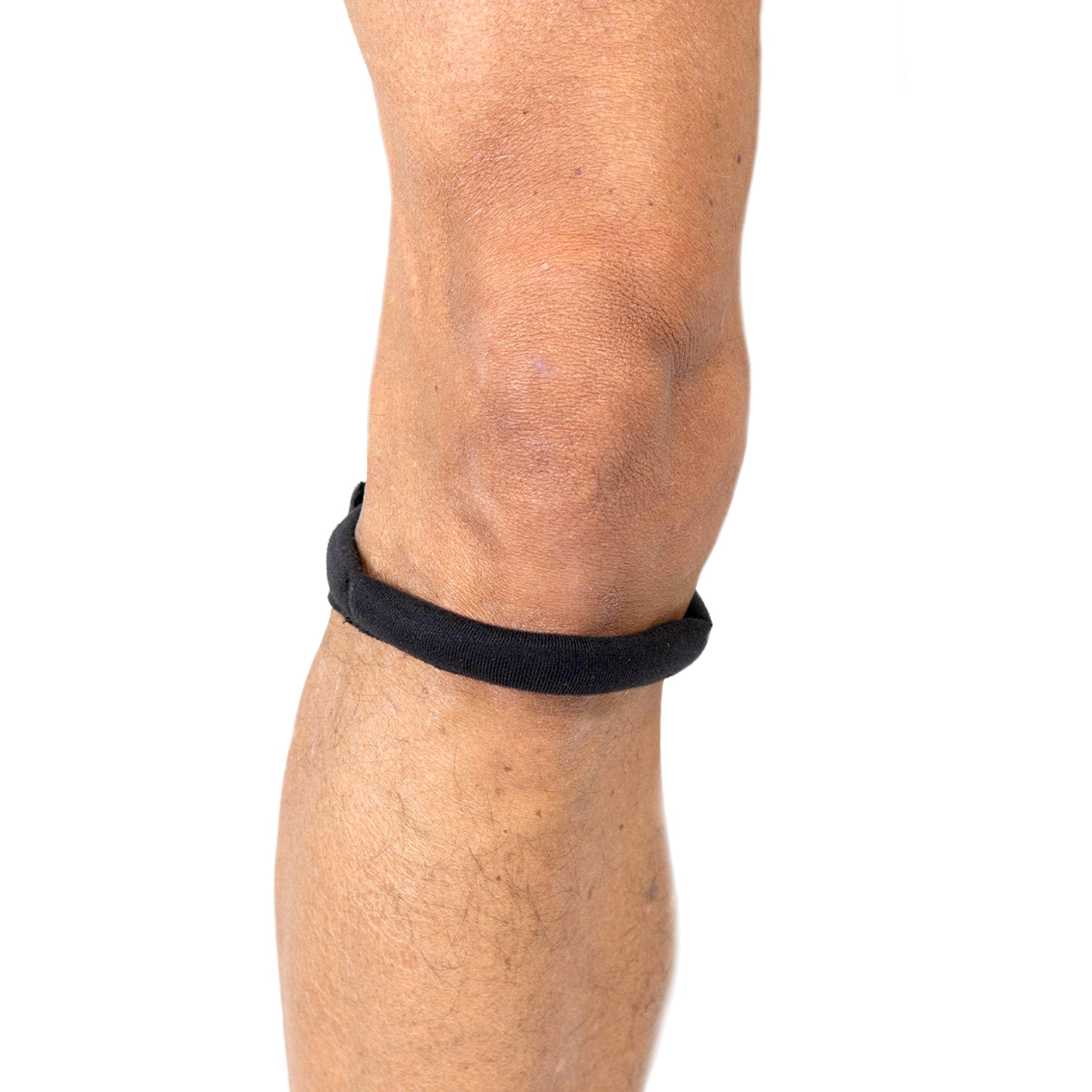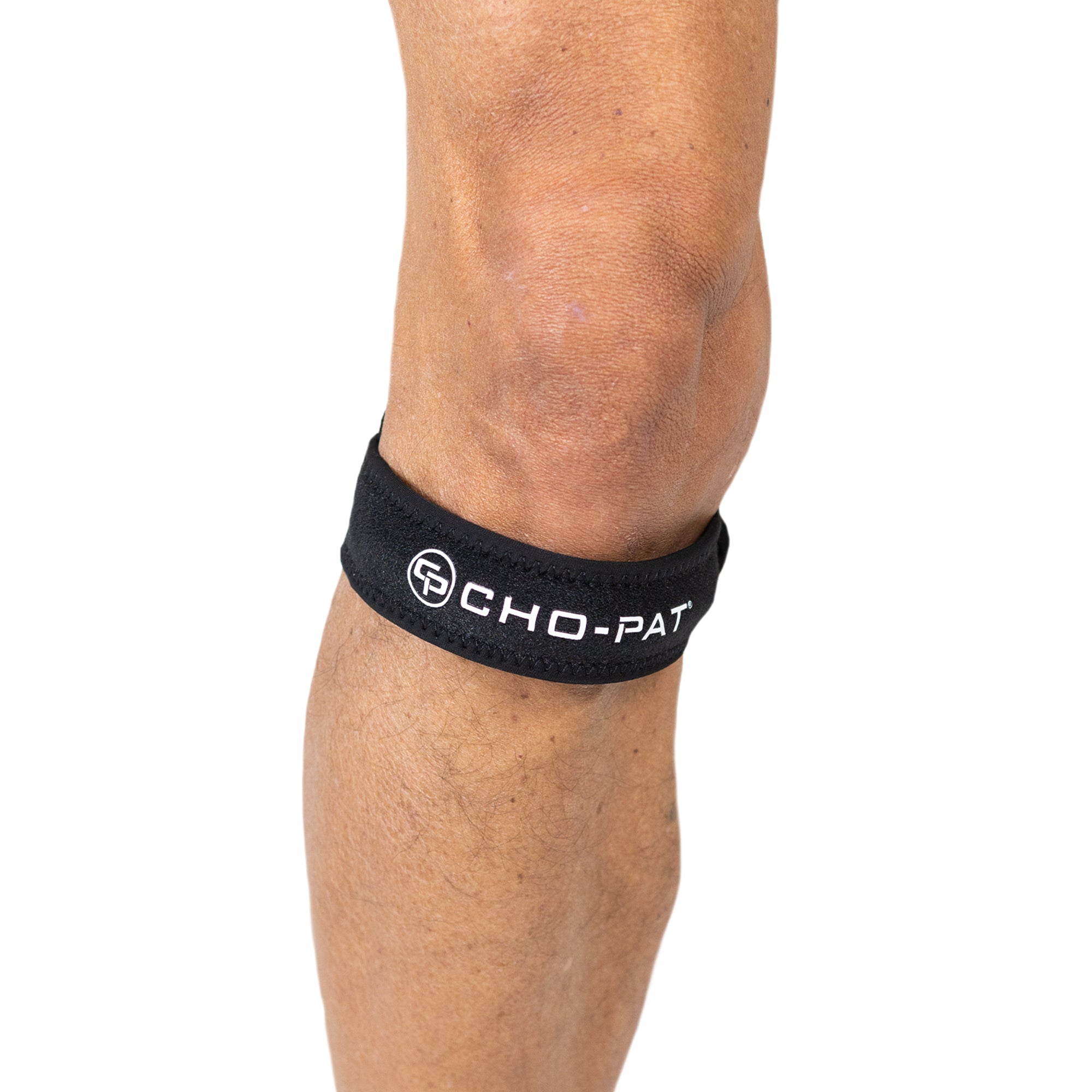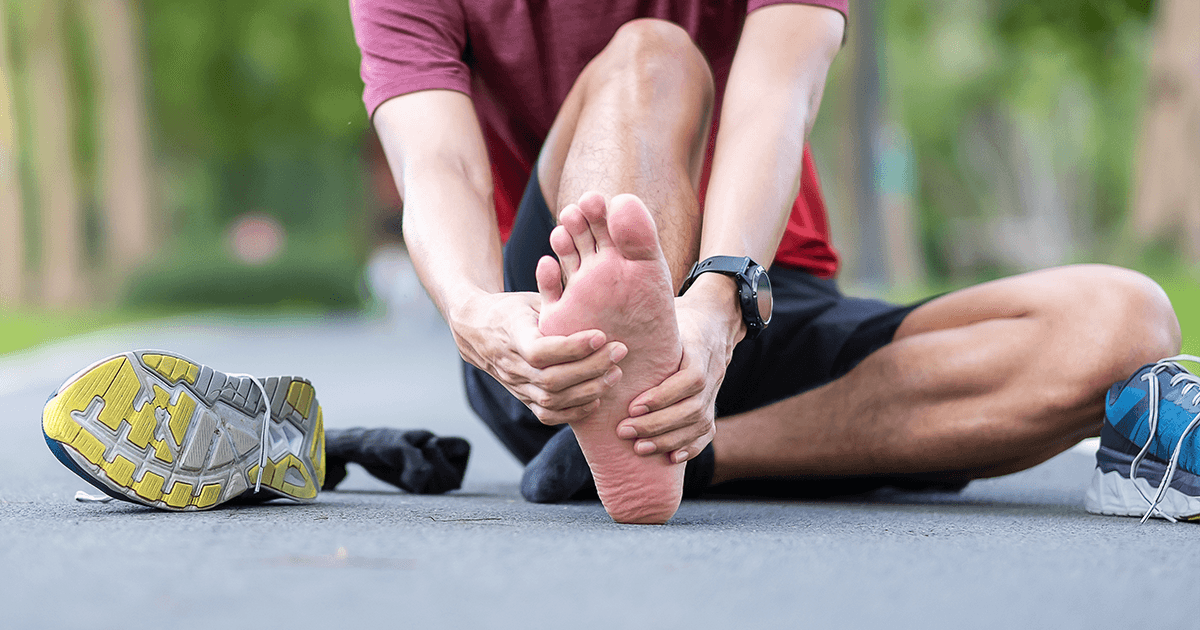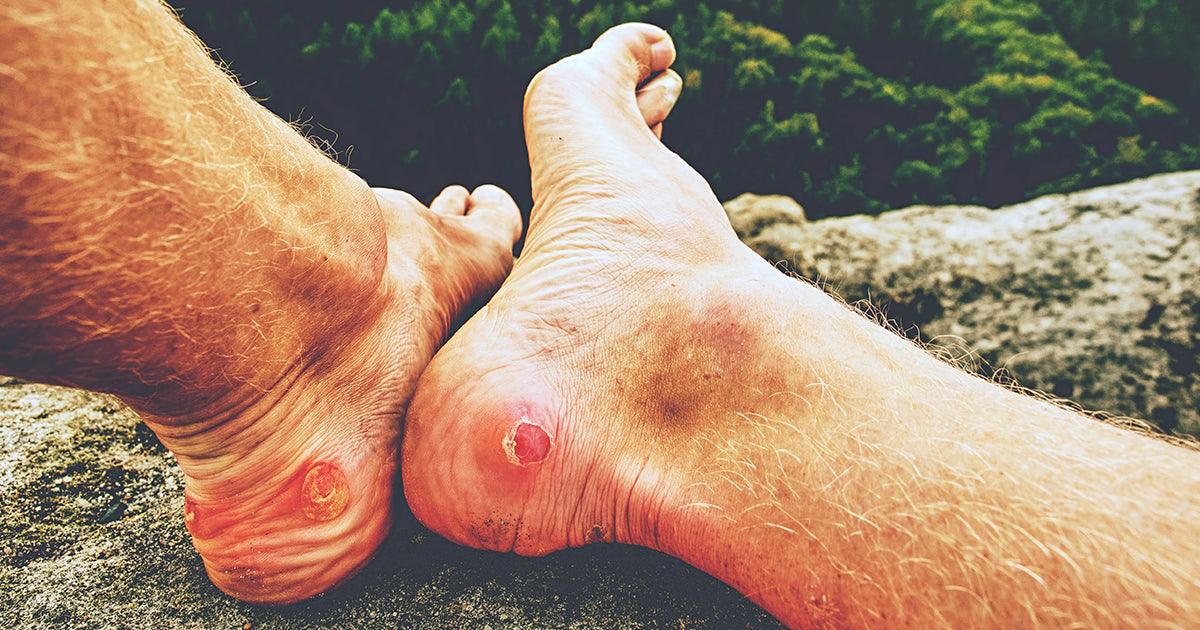How does the Cho-Pat® Dual Action Knee Strap Relieve Common Knee Ailments?
If you are an athlete, you understand the frustration of having to sit out from your sport due to an injury. Knee injuries are especially common for runners or athletes whose sports involve running and jumping. The repetitive motion and stress can cause strain on tendons, the meniscus and other connective tissues. In turn, these injuries result in pain and reduced mobility.
Serious athletes are always looking for ways to prevent or reduce such injuries. You might be wondering, “Do Cho-Pat knee straps really work?” Cho-Pat designs its devices to address the primary causes of knee injuries.
Table of Contents:
- Cho-Pat® Knee Straps: Does it Work?
- Why the Knee is Prone to Injury
- Common Knee Injuries
- Preventing Knee Injuries
- Recovering from Knee Injuries
- The Unique Design of the Cho-Pat Dual Action Knee Strap
Cho-Pat® Knee Straps: Does It Work?
When recovering from an injury, a knee brace or strap acts as extra support for the tendons and ligaments around the knee. Properly sized, the Cho-Pat patellar strap applies uniform pressure to the front of the knee. This support maintains the tracking of the patella so that it follows its proper path. Athletes who wear these braces often see a reduction in pain and increased mobility. A basic strap will address issues like jumper’s knee and arthritis.
Why the Knee is Prone to Injury?
The knee is a hinge joint at the intersection of the thigh and lower leg. The muscles of the thigh control its motions. The quadriceps flex when you straighten your leg. For bending the knee, your hamstrings on the back of the thigh exert force.
The design of the joint allows for deep bends. If you watch of few minutes of a yoga class, you will see the extreme range. However, tendons around the knee keep it stable by preventing much rotation or side-to-side bending. The amount of connective tissue involved with the joint makes it prone to several forms of tendon strains and tears.
The structures of your knees can also suffer from repetitive strains and overuse. Every time you take a step or jump for a ball, your knees absorb the force. As you age, you may start to experience the consequences of this hard work.
Common Knee Injuries:
Athletes are likely to experience knee injuries because of the way they use their bodies. However, knee pain and weakness are not restricted to people who participate in sports. Factors such as age, body type and body weight can also lead to injury over time.
1. Runner’s Knee
Patellofemoral pain syndrome is the official term for runner’s knee. This condition involves pain around the patella. You may also notice clicking or grinding sounds as the patella makes contact with the femur. This condition is common with runners who try to increase their mileage too quickly.
2. Jumper’s Knee
Patellar tendonitis is also known as jumper’s knee. Although it is associated with sports such as basketball that involve repeated jumping, this condition can result from any repetitive motion involving the knee. The patellar tendon reaches from your patella to the tibia on your lower leg. Repeated stress can lead to inflammation of this tendon and pain when using the knee joint.
3. Meniscus Tears
A piece of cartilage called the meniscus acts as a cushion between the femur and the tibia. It handles the pressure and strain of normal motion well. However, over-rotation of the knee can cause it to tear. This common injury leads to pain and stiffness in the joint. For some tears, the knee has difficulty bending. In other cases, patients experience a lack of support and buckling.
4. IT Band Syndrome
The iliotibial band is a ligament that runs from the pelvis to the tibia. As you exercise, this band passes over connective structures that stabilize the knee. With overuse, the ligament becomes inflamed and irritates other tissues in the area. The most frequent sign of this disorder is pain on the outside of the upper knee.
5. Arthritic Knees
Arthritis of the knee can begin at any age, but it is most common in people over 50. Years of repetitive stress wear down the cartilage that protects and cushions the joint. As the condition worsens, the bottom of the femur rubs directly onto the tibia. The irritation can also lead to the growth of painful bone spurs. People with arthritis experience several symptoms such as pain, swelling and locking.
Preventing Knee Injuries:
A sudden injury in a contact sport may be difficult to escape. However, many knee injuries are progressive. Problems caused by overuse and strain are often preventable by adjusting how you exercise.
1. Work Up to Challenges
People just beginning an exercise routine have a greater chance of injury. They often challenge themselves to do too much too soon. Your body adapts to stress over time. If you build up your endurance slowly, your muscles will strengthen to give better support to your joints.
2. Maintain a Healthy Weight
Extra weight puts additional strain on your feet, knees and legs. If you are adopting an exercise program to lose weight, you may want to begin with lower-impact exercises that put less strain on your joints.
3. Switch Up Your Exercises
There are many types of exercises from which to choose. For cardio machines, you might switch between running, biking and rowing. Swimming is an excellent option for a cardiovascular challenge that is easy on your joints.
4. Avoid Working Through Pain
Many people are sore after a workout, but chronic pain is another issue. If it hurts when you run, your body is telling you to take a break. If you give yourself time to heal, you can prevent a mild strain from turning into a chronic issue.
5. Support Your Knees with the Right Equipment
Companies design modern sports equipment to support and protect your knees. Cyclists should make certain that their bikes are properly adjusted to minimize strain. Runners need to change their shoes and insoles to maintain support. An additional support like a Cho Pat patellar strap will exert slight pressure to keep your knee in proper alignment as you work out.
Recovering from Knee Injuries:
A severe knee injury may require surgery for a complete repair. Most mild injuries will improve with time and extra care.
1. Rest
The simplest treatment for a knee injury may be the most difficult for a serious athlete. If connective tissue in your knee is inflamed, it will take time to return to normal. However, taking a break from your sport for a short time now will improve your long-term recovery.
2. Ice
Sports trainers have used cold treatments to reduce swelling for years. As you return to your workout routine, icing the area can prevent the return of inflammation.
3. Elevation
Elevating your leg reduces the pressure on your knee by reducing swelling. This technique works best if you raise your knee above your heart. Stacking a few pillows under your knee while you lie on the couch is a standard procedure.
4. Pain Relievers
Over-the-counter NSAID pain relievers are a common prescription for arthritis. These drugs both minimize pain and reduce inflammation.
5. Physical Therapy
Physical therapists study for years to understand the mechanics of your body. These experts can offer treatments and suggest exercises that will help you return to full mobility.
The Unique Design of the Cho-Pat Dual Action Knee Strap
The Cho-Pat Dual Action Knee strap increases support for the knee without reducing mobility for the athlete. One strap goes below the patella, and another sits above it. These lines of support give greater stability to the underlying tissues. By putting pressure on the tendon above the patella, this knee strap can prevent and relieve the pain of runner’s knee by easing tension on the quad muscles.
If an athlete has had knee problems in the past, this knee strap is a positive step in keeping them at bay. Cho-Pat uses surgical tubing that pushes gently above and below the knee. They manufacture the strap in several sizes. Along with simple fasteners, this gives wearers a better fit and stronger support.
Whatever your level of athleticism, knee injuries are always a possibility. A Dual Action knee strap can help you stay active in the sport you love.
PLEASE NOTE: The information on this website and article is for information only and should not be used as a substitute for consulting your doctor. Consult your doctor for proper diagnosis and rehabilitation.
OTHER RELATED TOPICS:
HOW TO CHOOSE THE RIGHT KNEE SUPPORT FOR RUNNERS
RUNNER’S KNEE: IMMEDIATE RELIEF & LONG-TERM HEALING
KNEE PAIN: SOLUTIONS TO PREVENT RUNNER’S KNEE




